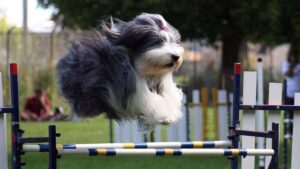
The Bearded Collie
Discover the Bearded Collie: a hardy, intelligent, and loyal herding dog from Central Asia to Scotland, known for its versatility and charm.
Home » Dog Breeds » Bearded Collie Dog Breed

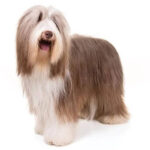
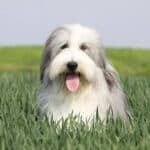
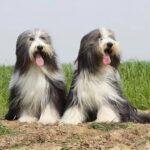
The Bearded Collie, often referred to as the “Beardie,” is a herding breed known for its enthusiastic demeanor, agility, and unmistakable shaggy coat. Originating from Scotland, this lively and engaging breed has gained admiration not just for its work ethic but also for its playful and affectionate nature, making it a favorite among families and dog enthusiasts alike.
Herding
20-22 Inches
45-55 Pounds
12-14 Years
| Country of Origin | Scotland |
|---|---|
| Bred For | Herding, Companionship |
| Known For | Quickness, Shaggy Coat, Friendliness |
| Popularity | Moderate |
| Temperament | Devoted, Charismatic, Confident |
| Activities | Herding, Running, Hiking, Conformation Shows, Dog Sports |
The Bearded Collie, affectionately known as the “Beardie,” boasts a rich heritage that is intertwined with the pastoral history of Scotland. The breed’s name gives a nod to its distinct appearance, with “collie” being a Scottish term for sheepdogs and “bearded” referring to its characteristic facial hair.
The precise origins of the Bearded Collie remain the subject of debate among canine historians. However, it’s widely believed the breed’s ancestors were brought to Scotland over 500 years ago, either by Polish or Central European traders. These visitors possibly exchanged Polish Lowland Sheepdogs for Scottish sheep, and the dogs they left behind are considered to be the Beardie’s direct ancestors. Over time, these foreign dogs were likely bred with local Scottish breeds, resulting in the Bearded Collie we recognize today.
The primary purpose of the Bearded Collie was herding. The breed’s agility, intelligence, and unwavering work ethic made these dogs invaluable assets to Scottish shepherds. Their dense double coat protected them from the often harsh Scottish weather, allowing them to work with ease under a range of conditions.
As with many breeds, the Bearded Collie’s popularity experienced fluctuations. By the mid-20th century, the breed was on the brink of extinction. Fortunately, dedicated enthusiasts took on the task of reviving the breed. Key figures like Mrs. Willison, who acquired a Bearded Collie named “Jeannie” in the 1940s, played a pivotal role in ensuring the breed’s survival and eventual resurgence in popularity.
The Bearded Collie has garnered recognition from several esteemed kennel clubs over the years. The American Kennel Club (AKC) extended its official recognition to the breed in 1976. The Royal Kennel Club (UK) also acknowledged the breed, having given it official status in the late 1950s. In addition, the Bearded Collie is fully recognized by the Fédération Cynologique Internationale (FCI).
Today, the Bearded Collie stands not only as a testament to its herding legacy but also as a beloved companion and show dog. The breed’s lively spirit, intelligence, and unmistakable appearance have endeared it to countless fans worldwide.
Adult male Bearded Collies typically stand between 21 to 22 inches tall at the shoulder, while mature females generally range from 20 to 21 inches. As for weight, Beardies usually weigh between 45 and 55 pounds, but these measurements can vary based on diet and exercise as well as genetics.
The Bearded Collie is a dog of medium size, portraying a picture of grace and strength. The Beardie’s body is slightly longer than it is tall, ensuring good ground coverage while herding. The breed’s substance—meaning the depth and density of the body—is solid without being coarse. The overall balance of the Bearded Collie is more essential than any one characteristic, ensuring it can perform any herding tasks with agility and endurance.
Texture: The Bearded Collie boasts a distinctive double coat that plays a pivotal role in the breed’s appearance. The protective outer coat is straight (or has a slight wave) and harsh, and is free from wooliness or curl. It is protective and falls naturally to either side of the dog. The Beardie’s undercoat is soft, furry, and tighter to the skin, providing insulation and protection against harsh weather conditions. It is dense and shorter than the outer coat. Regular grooming is necessary to maintain the coat’s texture and to prevent matting.
| Standard Color | |
|---|---|
| Black | ee |
| Blue | ee |
| Brown | ee |
| Fawn | ee |
| Standard Marking | |
|---|---|
| White Markings | ee |
| White & Tan Markings | ee |
A Note About Color: Bearded Collies are born either black, blue, brown, or fawn, with or without white markings. The coat’s color usually lightens with maturity. White is acceptable only on the skull, as a blaze on the foreface, on the chest, around the neck, on the feet, and on the tip of the tail. Tan markings are acceptable on the eyebrows, inside the ears, on the cheeks, under the root of the tail, and on the legs above the hock.
The tail of the Bearded Collie is one of its defining features, displaying both form and function.
Set low and extending to (or slightly below) the hock, the tail is carried low, with an upward swirl at the tip when the dog is in a relaxed state. When the Beardie is alert or in motion, the tail is lifted, but it doesn’t curl over the back.
Covered with abundant hair, the tail’s coat is slightly wavy, echoing the texture of the body coat. This furry appendage serves not only as a rudder when the dog is moving but also as a tool for communication, signaling the dog’s mood and intentions.
Unlike some herding breeds, the Beardie’s tail is always undocked, allowing it to move and flow naturally. Its length and movement play a vital role during herding activities, serving as a visual aid for both sheep and shepherd.
The tail’s graceful movement, combined with its abundant coat, adds to the flowing silhouette of the Bearded Collie, making it a standout feature in both the show ring and in an open pasture.
Owning a Bearded Collie can be an exhilarating experience, but as with any dog, Beardies come with unique attributes and requirements that potential owners should be aware of. Whether for work, show, or companionship, understanding the basics of Beardie ownership can help to ensure a harmonious relationship between dog and owner.
The Bearded Collie is generally a robust and hearty breed with a zest for life. However, like all breeds and mixed breeds, it can be predisposed to specific health concerns. Regular veterinary check-ups and a proactive approach to wellness can ensure that every Bearded Collie lives a long, active, and happy life.
Lifespan: The average lifespan for a Bearded Collie is between 12 to 14 years. A well cared for Beardie can exceed this average, allowing additional years together with its families and friends.
Like any dog, the Bearded Collie can have its set of health challenges that owners should be mindful of. Early detection and regular veterinary check-ups can go a long way toward managing, and sometimes preventing, these issues.
In addition to being aware of these potential health concerns, regular veterinary check-ups are essential for a Bearded Collie. Regular vet exams can help to catch issues early on, ensuring that every dog remains in optimal health.
The Bearded Collie is renowned for its charismatic and spirited personality, exuding a natural charm that blends an affable nature with the energetic zest of a herding dog. When considering if a Beardie is suitable for the novice owner, one must understand that while the breed is responsive and trainable, its high energy and intelligent nature can sometimes pose challenges. Novice owners should be consistent, patient, and employ positive reinforcement methods when training their Beardie.
Delving into their sensitivity, Beardies are notably in tune with their surroundings and their families. They form strong attachments and often pick up on the emotions of their human counterparts. This means that a harsh reprimand might discourage them, making gentle corrections a more favorable approach.
Bearded Collies cherish company. While they can exhibit independent streaks, extended periods of isolation can result in anxiety or boredom, leading these dogs to adopt unwanted behaviors such as excessive barking or chewing. Ensuring they have ample mental stimulation and aren’t left alone for long stretches is crucial.
When it comes to social aspects, Bearded Collies typically showcase an amiable demeanor with other dogs. Early socialization ensures they remain well-adjusted and tolerant in canine company. Their gentle and playful nature also deems them excellent companions for children. However, owners should note their inherent herding instinct, which might prompt them to “herd” youngsters during playtime, emphasizing the importance of supervised interactions.
Friendliness is a hallmark characteristic of the Bearded Collie. The Beardie approaches other dogs with a sociable attitude, rarely showing aggression or indifference. Additionally, the breed’s outgoing nature means these dogs will usually greet strangers with enthusiasm, although some might exhibit initial reservation. Proper introductions and consistent positive experiences can bolster their friendly tendencies.
Feeding a Bearded Collie requires understanding the breed’s nutritional needs, which can vary based on age, activity level, and overall health. The diet provided should support the Beardie’s high energy levels, ensuring the dog remains active and healthy throughout its life.
When it comes to feeding Bearded Collie puppies, their growing bodies demand a diet rich in protein to support muscle development, as well as essential fats for brain growth. It’s advisable to provide them with specially formulated puppy food that meets these requirements. As they transition into adulthood, their dietary needs will change.
Adult Bearded Collies typically require a balanced diet that provides the right mix of protein, fats, and carbohydrates. The exact amount of food can vary, but on average, an adult Bearded Collie might consume between 1.5 to 2 cups of high-quality dog food daily. This can be split into two meals to help with digestion and prevent potential bloating. Remember, the exact amount will vary based on a dog’s individual metabolism, age, weight, activity level, and health.
In terms of nutrition, it’s essential to provide Beardies with a well-balanced diet that offers all the vital nutrients. Some owners opt for commercially available dog food, while others prefer a home-cooked or raw diet. Whichever route is chosen, it’s crucial to ensure the food is free from fillers, additives, and low-quality ingredients. Regular consultations with a veterinarian or a pet nutritionist can help owners tailor the best diet for their dog.
Lastly, fresh water should always be readily available to keep the Bearded Collie hydrated, especially considering the breed’s thick double coat, which can make the dog susceptible to overheating in certain conditions.
Training a Bearded Collie can be both a rewarding and challenging experience. These dogs are intelligent, quick learners, and often eager to please, but they also have an independent streak, typical of many herding breeds.
Beardies are known for their playful nature, which means they often approach training sessions with enthusiasm. Their intelligence ensures that they pick up on commands and cues quite rapidly. However, this same intelligence means they can sometimes be a tad stubborn, thinking for themselves rather than following a directive. As a result, patience and consistency are essential when training a Bearded Collie.
One of the prominent characteristics of the Bearded Collie is its vocal nature. The breed has a tendency to bark, especially when these dogs are bored or seeking attention. This can be addressed in training by teaching them “quiet” commands and ensuring they’re sufficiently stimulated both mentally and physically.
As for the Beardie’s wanderlust potential, while these dogs are generally loyal companions to their families, their curiosity can sometimes get the better of them. It’s advisable to have a securely fenced yard and always keep them on a leash during walks unless in a secured area.
Predatory instincts are relatively low in Bearded Collies compared to some other breeds. However, their herding instinct is strong. This means they might attempt to herd other animals or even children during play. This behavior can be channeled positively through activities like herding exercises or controlled play sessions.
In terms of training methods, positive reinforcement works best with Bearded Collies. They respond well to treats, praise, and play. Negative or harsh training methods are not only ineffective but can also harm the bond between the dog and its favorite person.
Understanding the exercise needs of a Bearded Collie is fundamental for potential and current owners. The Bearded Collie is a vivacious and active breed, having been originally bred for herding livestock in the varied terrains of Scotland. As such, these dogs possess an inherent need for consistent physical activity and mental stimulation.
| Energy Level | Medium-High |
|---|---|
| Exercise Requirements | 1 Hour/Day (Minimum), Daily Walks, Vigorous Running, Regular Exercise, Playing with Another Dog, Mental Stimulation |
The energy level of a Bearded Collie is notably high. These dogs thrive when given ample opportunities to run, play, and engage in activities that challenge both their bodies and minds. A simple walk around the block might not be sufficient for this breed. Beardies benefit greatly from longer, brisk walks, off-leash playtime in secured areas, and engaging in stimulating games like fetch or tug-of-war.
In terms of intensity, Beardies approach activities with enthusiasm and vigor. They’re not merely content with a slow-paced stroll, but rather, they prefer activities that let them utilize their agility and speed. While they do have bursts of high energy, they’re also known to enjoy their relaxation time, especially after a good bout of exercise.
Playfulness is another hallmark of the Bearded Collie. These dogs adore interactive games and thrive on the companionship of their human family during play sessions. Toys, Agility courses, or even simple games in the backyard can provide the Beardie with both physical exertion and mental engagement.
Considering their exercise needs, it’s essential to allocate a dedicated time daily for the Bearded Collie’s physical activity. Without sufficient exercise, Beardies can become restless, potentially developing behavioral issues such as excessive barking, chewing, or digging.
Grooming a Bearded Collie is an essential aspect of the breed’s care and maintenance. The distinctive long, double coat of the Beardie is both a hallmark of their appearance and a commitment for their owners.
| Coat Type | Double Coat: Soft, Furry, and Close Undercoat; Flat, Harsh and Shaggy Outer Coat |
|---|---|
| Grooming Requirements | Weekly Brushing, Occasional Bathing, Routine Ear Cleaning, Periodic Nail Trimming, Regular Tooth Brushing |
The coat of a Bearded Collie is thick and shaggy, with a soft undercoat and a harsher outer coat. This unique combination offers protection against the elements, a testament to the breed’s history as hardy herding dogs in the Scottish Highlands. However, the very nature of the dog’s coat means it can easily become tangled and matted if not regularly maintained.
Regular brushing is crucial for the Bearded Collie. At a minimum, the coat should be brushed thoroughly at least a couple of times a week, though many owners opt for daily sessions to prevent knots and tangles. These grooming sessions are not only beneficial for the coat, they also provide an excellent opportunity to check for any signs of skin issues, ticks, or other potential problems.
As for shedding, the Bearded Collie is not considered a heavy shedder, but these dogs do undergo seasonal shedding. During these periods, more frequent brushing can help to manage the loose hair and promote a healthier coat.
Beyond brushing, other grooming essentials for the Beardie include regular ear cleaning to prevent infections, teeth brushing for dental health, and nail trimming to keep their paws in top condition.
Bathing a Bearded Collie doesn’t need to be a frequent affair. Given the nature of the breed’s coat, overbathing can strip essential oils, leading to a dry and brittle texture. It’s advisable to bathe these dogs as needed, which could be once every month or when they get particularly dirty.
Adopting or purchasing a Bearded Collie is an exciting journey, but understanding the breed’s lifestyle needs will ensure a harmonious coexistence with this vivacious purebred.
When considering housing, while a Bearded Collie can adapt to apartment living, it’s not the ideal environment for such an active and energetic dog. If an apartment is the only option, it’s imperative to ensure the Beardie gets ample daily exercise and mental stimulation to compensate for the lack of space. Ideally, these dogs thrive best in homes with a spacious yard where they can run and play freely. If you have a garden, it’s crucial to secure it, as their curious nature might lead them to wander off if given a chance.
Climate plays a role in a Beardie’s comfort as well. Originating from the temperate climate of Scotland, this breed is naturally suited for cooler conditions. The thick double coat provides insulation against cold weather, making these dogs relatively resilient to chilly temperatures. However, this same coat can make hot and humid climates challenging for them. In warmer conditions, it’s essential to provide plenty of shade, fresh water, and possibly limit their activity during the hottest parts of the day to prevent overheating.
In terms of family dynamics, Bearded Collies are known for their affectionate nature and get along splendidly with both adults and children. However, the breed’s herding instinct might kick in with younger children, leading the Beardie to “herd” them during play. Gentle guidance and training can manage this behavior.
Bearded Collies, with their sociable demeanor, typically get along well with other pets in the household, be they other dogs or even cats. However, early socialization is key to ensuring a peaceful coexistence with other animals, especially smaller pets due to the Beardie’s herding instincts.
The charm of Bearded Collie puppies is undeniable. Their fluffy coats, playful antics, and boundless energy are enchanting, drawing many to the breed. However, understanding their unique needs during the puppy stage ensures they will grow into well-adjusted, healthy adults.
The early days of a Bearded Collie puppy are pivotal in shaping its future. Right from the beginning, nutrition plays a significant role. Puppies grow rapidly, and their dietary needs differ from those of adult dogs. It’s essential to feed them a high-quality puppy formula that meets the nutritional requirements for healthy bone and muscle development. This food should be given in measured amounts to ensure they’re getting the right nutrients without overfeeding, which can lead to obesity issues later in life.
Socialization is another cornerstone of puppy care. The experiences a Bearded Collie puppy has during its early days will influence its behavior as an adult. Introducing the puppy to various environments, people, sounds, and other animals in a positive manner can help to mold a confident and well-adjusted adult dog. Puppy training classes are often beneficial, teaching essential obedience commands and providing a structured environment for socialization.
Regular veterinary check-ups are crucial during this growth phase. Puppies require a series of vaccinations to protect them from various diseases. Your veterinarian will set up a vaccination schedule and can also advise on preventive care for parasites like fleas, ticks, and worms.
Playtime is an intrinsic part of a puppy’s life, and for the Bearded Collie, it’s also an avenue for burning off the pup’s natural energy. However, it’s essential to provide safe toys and supervise play sessions, ensuring the puppy doesn’t ingest anything harmful or develop aggressive play habits.
Lastly, grooming should begin early. Even though the puppy coat is softer and less dense than the adult’s, getting your Bearded Collie puppy accustomed to regular brushing will set the stage for easier grooming sessions in the future. It also provides an opportunity to check for any skin issues or parasites.
The Bearded Collie’s dynamic history as a herding dog has instilled in the breed a penchant for various activities and dog sports. The Beardie’s agility, intelligence, and boundless energy make it an ideal participant in a range of activities, from formal dog sports to recreational pastimes.
Engaging a Bearded Collie in these activities and sports not only ensures the dog receives ample physical exercise, it also stimulates them mentally. Participating in these events can further enhance the bond between the dog and their handler, showcasing the diverse talents that are innate to this breed.
The Bearded Collie is recognized by the world’s leading registries and kennel organizations, which categorize the breed into a specific Group based on its unique characteristics. This breed is recognized worldwide under the following Group designations:
| Organization | Group Designation |
|---|---|
| AKC (American Kennel Club) | Herding |
| UKC (United Kennel Club) | Herding Dog |
| CKC (Canadian Kennel Club) | Herding |
| ANKC (Australian National Kennel Council) | Working Dogs |
| RKC (The Royal Kennel Club) | Pastoral |
| FCI (Fédération Cynologique Internationale) | Group 1: Sheepdogs and Cattledogs Section 1: Sheepdogs |
The ideal Bearded Collie is described by a Breed Standard that is approved by each of the world’s leading registries and kennel organizations. The Breed Standards for this breed may be found in the following links:
| Organization | Breed Standard |
|---|---|
| American Kennel Club | AKC Bearded Collie Breed Standard |
| United Kennel Club | UKC Bearded Collie Breed Standard |
| Canadian Kennel Club | CKC Bearded Collie Breed Standard |
| Australian National Kennel Council | ANKC Bearded Collie Breed Standard |
| The Royal Kennel Club | RKC Bearded Collie Breed Standard |
| Fédération Cynologique Internationale | FCI Bearded Collie Breed Standard |
The Bearded Collie, with its rich history and endearing qualities, has garnered a dedicated following, leading to the establishment of breed-specific clubs that champion its welfare, heritage, and promotion. These organizations are integral for enthusiasts and owners alike, offering resources, events, and a shared passion for the breed.
In the United States, the Bearded Collie Club of America (BCCA) stands as the primary organization devoted to the breed. Founded in 1969, the BCCA serves to protect and advance the interests of the Bearded Collie, providing guidance on grooming, training, and health matters. The club also organizes events, including Specialty Shows, Herding Trials, and Agility competitions, fostering camaraderie among Beardie enthusiasts.
The Canadian Bearded Collie community finds its hub in the Bearded Collie Club of Canada (BCCC). Much like its American counterpart, the BCCC is deeply invested in the well-being and promotion of the breed within the country. This club too offers a myriad of resources and organizes events dedicated to celebrating the Bearded Collie.
In the United Kingdom, the Bearded Collie Club (BCC), established in 1955, stands as the primary organization devoted to the breed. The club offers invaluable resources for breeders, owners, and enthusiasts, and also plays a crucial role in organizing championship shows and other breed-specific events.
Membership or affiliation with these breed clubs provides an opportunity for Bearded Collie enthusiasts to stay informed, network with other aficionados, and contribute to the continued well-being and recognition of this remarkable breed.
As with many breeds, there are instances where a Bearded Collie may find itself in need of a new home, whether due to changes in family circumstances, abandonment, or other unforeseen situations. Dedicated rescue organizations have stepped up to provide assistance, ensuring these dogs receive the love, care, and attention they deserve.
In the United States, the Bearded Collie Club of America (BCCA) has an affiliated rescue operation dedicated to the welfare of Beardies in need. This initiative aims to rescue, rehabilitate, and rehome Bearded Collies, giving them a second chance at a loving home.
In Canada, the Bearded Collie Club of Canada (BCCC) operates a BCCC Rescue Program, and there are also independent rescue organizations that specialize in herding breeds. Both types of groups offer rescue services tailored to the unique needs of the Bearded Collie, ensuring that everything, from fostering to finding permanent homes, is handled with care and expertise.
In the United Kingdom, the Bearded Collie Club (BCC) Rescue & Welfare scheme comes to the aid of Beardies in distress. The organization’s mission is to offer support to Bearded Collies and their owners, ensuring the well-being of each dog and assisting in rehoming efforts when necessary.
Bearded Collies do shed, although their long, double coat might give the opposite impression. Regular grooming is essential to manage the breed’s shedding and to prevent the hair from matting. Weekly brushing can help to remove loose hair and reduce the amount of hair found around the house.
Bearded Collies are typically non-aggressive. Instead, they are known for their friendly, sociable, and outgoing nature. However, like any dog, individual temperament can vary, and early socialization is crucial to ensure well-rounded behavior.
Yes, Bearded Collies make excellent family dogs. Their gentle temperament and playful nature make them great companions for children and adults alike. They thrive in family environments where they can be involved in daily activities and receive plenty of attention.
No dog breed is truly hypoallergenic, and the Bearded Collie is no exception. While the breed’s long hair might seem like it would retain allergens, regular grooming can help to reduce dander and loose hair, which can help allergy sufferers. However, individuals with severe allergies should spend time around the breed to gauge their reactions before committing to ownership of this breed.
Bearded Collies are medium-sized dogs. Males typically stand between 21 and 22 inches at the shoulder, while females are slightly smaller, standing between 20 and 21 inches. Their weight can range from 45 to 55 pounds, depending on gender and individual genetics.
Bearded Collies generally have a good lifespan for a dog of their size. With proper care, a balanced diet, and regular veterinary check-ups, many live well into their teens. The average lifespan is around 12 to 14 years, though some can live longer with optimal care.
Yes, Bearded Collies do shed. Their double coat will shed throughout the year, especially during seasonal changes. Consistent grooming, including brushing and occasional baths, will help to manage the shedding and keep their coat in top condition.
Bearded Collies, despite their herding instinct, can get along with cats, especially if they’re introduced to them at a young age. Early socialization and training can ensure a harmonious relationship between a Beardie and its feline companion. Individual reactions can vary, however, but in general, with proper introductions and supervision, a Beardie can coexist peacefully with cats.

Discover the Bearded Collie: a hardy, intelligent, and loyal herding dog from Central Asia to Scotland, known for its versatility and charm.
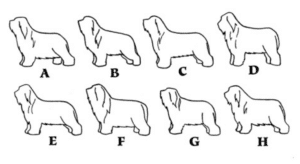
Explore the unique silhouette and structure of the Bearded Collie, emphasizing the importance of overall balance in judging.

Discover the Bearded Collie: a hardy, intelligent, and loyal herding dog from Central Asia to Scotland, known for its versatility and charm.

Explore the unique silhouette and structure of the Bearded Collie, emphasizing the importance of overall balance in judging.
The best way to ensure a long and happy relationship with a purebred dog is to purchase one from a responsible breeder. Not sure where to begin?
Contact the National Parent Club’s Breeder Referral Program, which is listed on the AKC Breeder Referral Contacts page.
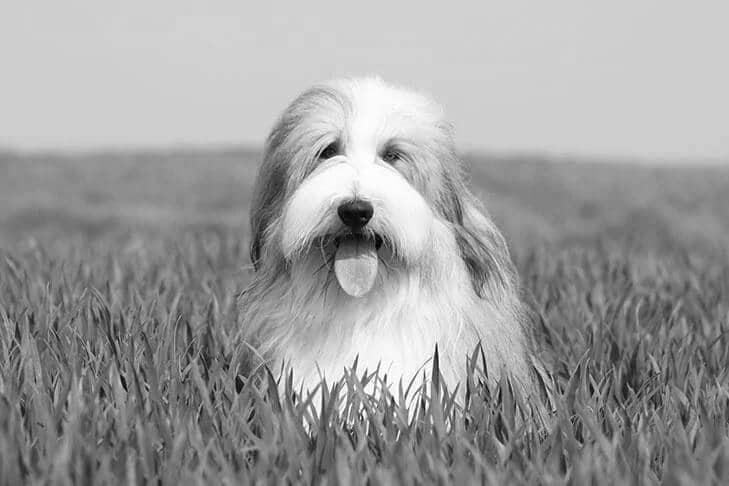

"*" indicates required fields
Showsight Magazine–the world’s most influential purebred dog publication since 1992. Each issue reaches a global audience dedicated to preserving the history and health of purpose bred dogs. Filled with award-winning editorial focused on news and insights from the dog show community, top breeders, handlers, AKC Judges, and more!